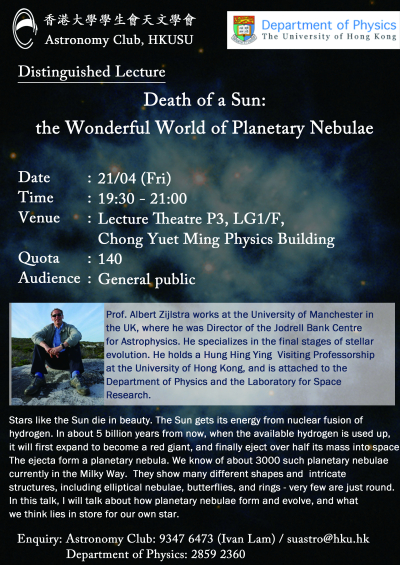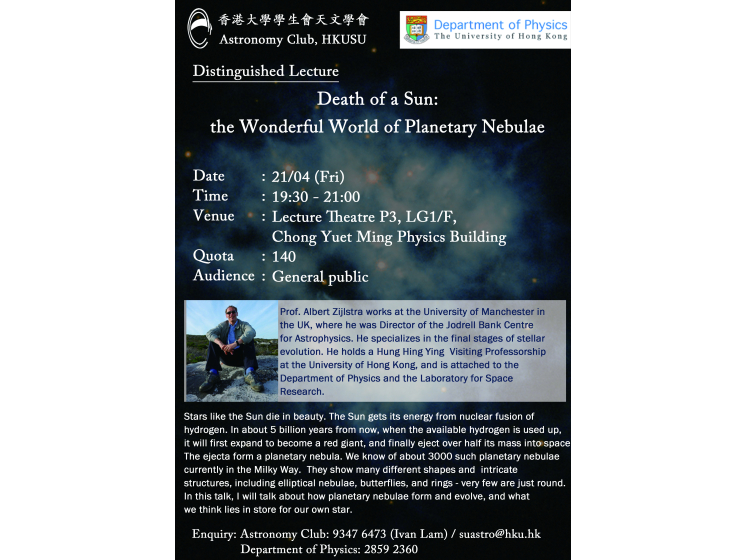Abstract
Stars like the Sun die in beauty. The Sun gets its energy from nuclear fusion of hydrogen. In about 5 billion years from now, when the available hydrogen is used up, it will first expand to become a red giant, and finally eject over half its mass into space. The ejecta form a planetary nebula. We know of about 3000 such planetary nebulae currently in the Milky Way. They show many different shapes and intricate structures, including elliptical nebulae, butterflies, and rings - very few are just round. How the stars give such complex shapes to the ejected nebulae is not well understood. Neither do we know what kind of planetary nebula the Sun will create at the end of its life. In this talk, I will talk about how planetary nebulae form and evolve, and what we think lies in store for our own star.
About the Speaker
Prof. Albert Zijlstra works at the University of Manchester in the UK, where he was Director of the Jodrell Bank Centre for Astrophysics. He specializes in the final stages of stellar evolution. He holds a Hung Hing Ying Visiting Professorship at the University of Hong Kong, and is attached to the Department of Physics and the Laboratory for Space Research.
Anyone interested is welcome to attend.






